Services We Offer
Dental Implants
A dental implant is a titanium metal root (like a new tooth root) that is surgically inserted in the jawbone beneath the gums that allows your dentist to position new replacement teeth or a bridge in the space where teeth are missing. An implant will not loosen or come out like a denture sometimes will. These useful restorations also help your general oral health since they do not have to be rooted to other teeth to anchor them, like bridges do. If you are thinking about getting permanent teeth implants, your gums should be healthy and you should have enough healthy bone to support the new tooth. If the bone is too frail or thin and cannot support the implant, you might need a bone graft. When replacing a tooth, the graft gives stability to the jawbone without damaging the teeth. Tooth implants will eliminate the issues that arise with other types of restoration, and they allow patients to eat anything without risking them breaking. They can replace a single lost tooth, or a full set upper or lower teeth can restore your smile on as few as four implants. Check out some more information on why dental implants are needed.
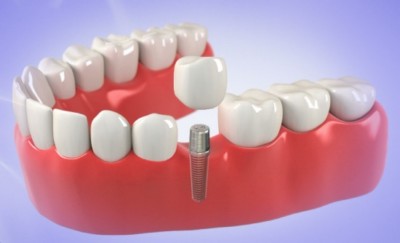
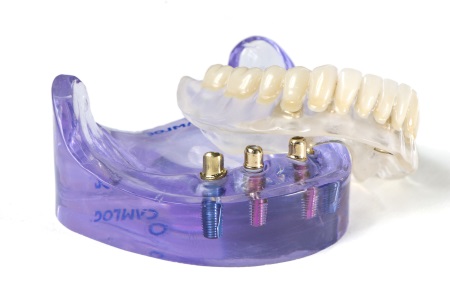
Denture Stabilization
Many patients who have suffered severe tooth loss due to trauma, decay, or periodontal disease, are interested in denture stabilization. There are lots of benefits to having both sets of teeth replaced at once. Some examples are less appointments, lower cost, and opportunity to get new teeth and ideal placement. With innovative new advances in dentistry, you can now have teeth that look, feel, and function like natural teeth. These new teeth will stay in your mouth permanently. First, the implants, which are titanium roots, are inserted into the jawbone. Then, over the next few months, the implants and bone are given the opportunity to fuse and form stable roots for the new teeth. At this time, a temporary healing cap will be placed over the new implants. Finally, a complete either fixed or removable denture will be made for you and secured to the new implants. See more about denture stabilization to learn more.
Bone Grafting
The jaw must have enough bone to anchor the implant(s). In cases where the bone beneath the gum doesn’t have enough density, a bone graft is done to create a strong base for the implant to anchor itself into. Grafts can be simple or complex, ranging from small grafts for a single implant to making significant changes to the dental ridge. The dentist can perform small grafts during the procedure, while larger grafts are typically done by an oral surgeon, prosthodontist or periodontist a few months in advance to provide healing time. Bone loss can be caused by trauma, an abscess/infection and periodontal disease. The bone density where teeth have been lost also deteriorates in time. Patients who have suffered from tooth loss for an extended period of time often need bone grafts before they get implants. Find out more about the bone grafting procedure.
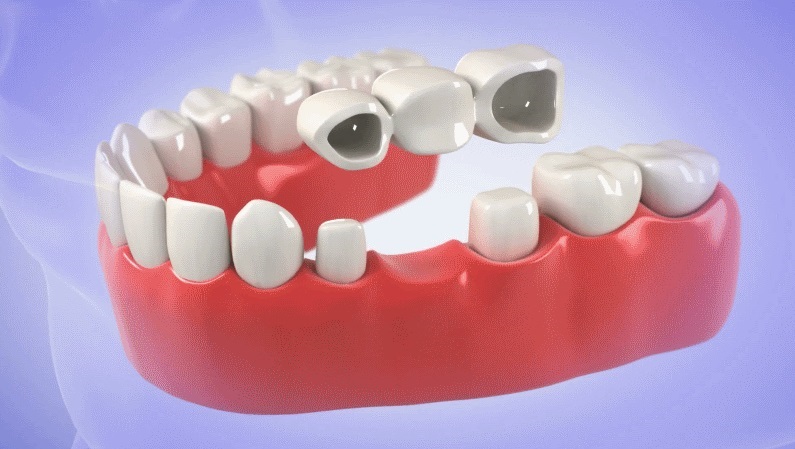
Dental Bridges
made with one or more artificial teeth, also known as pontics. These are held in place with two dental crowns, also called abutments. Although they can be made from different types of materials, they are frequently made with porcelain to look most natural. To place a conventional bridge, the dentist will place the crowns to the teeth located on either side of the gap, keeping the replacement tooth or teeth in the empty space. This results in beautiful, restored smile and improved eating and speaking abilities. Bridges are able to be positioned on dental implants, which do not require support from natural teeth. To hold these bridges in place, the dentist will surgically insert titanium metal posts in the jawbone, so the bridge can be secured. These restorations are known to be the most long-lasting because they are held on artificial roots, which makes them the strongest way to secure a bridge. Learn more about restoring one or more missing teeth with a dental bridge.
Dental Crowns
Your dentist may recommend placing a dental crown for several reasons: a tooth is particularly weak and needs to be kept together or it needs a bridge, you might have a tooth that has heavy staining, or you need to crown a tooth for cosmetic reasons. These are used to fully cover or “cap” a damaged tooth. In addition to strengthening the tooth, it can be used to restore the appearance. A crown can also be put on top of an implant as a dental restoration for the look and functionality. Porcelain or ceramic crowns can match natural teeths’ color. Other materials include gold and metal alloys, acrylic and ceramic. The dentist first will prepare the tooth by taking off the tooth’s outer layer to fit the crown, unless the crown will be placed on an implant. An impression is taken to create a mold for the new tooth, you will receive a temporary crown to wear while the permanent one is made. Once the new crown is ready, the dentist will put it in the mouth and make any needed changes. Click here to learn more.
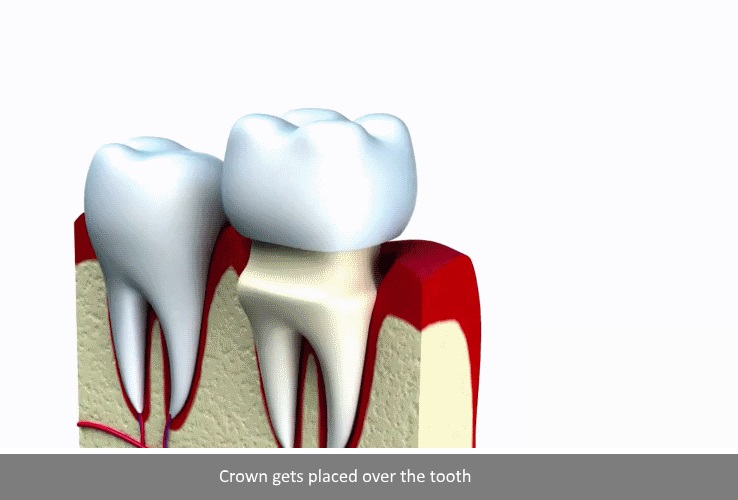
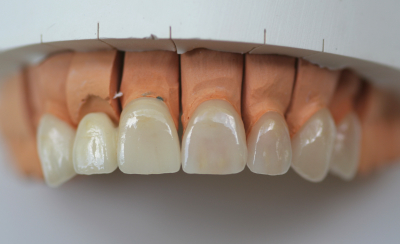
Dental Veneers
Dental veneers are thin porcelain or composite resin shells that are customized to fit on top of teeth, making the smile look whiter and sometimes providing a more even smile. They help with repairing chipped, cracked, stained, uneven, or gapped teeth. If teeth are heavily stained or damaged, veneers are able to restore the mouth with a lovely, white smile. In addition, veneers are hard to stain, so they are a good selection for patients who want to achieve a perfect smile. Drinking coffee, smoking cigarettes or eating artificially colored foods over time will stain your smile, making discolored areas or turning them a yellow or brown color. Stained teeth can be bleached at home or at the dentist’s, but staining can happen again. If you want for a more long lasting way to whiten teeth, want to close gaps, fix damaged, or uneven teeth, then dental veneers may be ideal for you. Read more to learn if veneers are right for your smile.
Dentures
Dentures can restore lost teeth with a removable prosthesis that can be placed back into your mouth. While dentures may take a while to get used to, and will not feel the same as your natural teeth, current dentures look more natural and are more comfortable than ever before. Dentures have two main types: full and partial. Full dentures are placed on a flesh-colored acrylic foundation that is put on top of your gums. The base of the denture for the upper jaw covers the palate, or roof of the mouth, while the lower denture foundation is shaped like a u so your tongue has room. A partial denture is built on a metal framework that is secured to the natural teeth. Sometimes crowns are secured to a few of your natural teeth and function as anchors for the denture. Partials can also be removed unlike bridges. Find out more to learn if dentures will work for you.
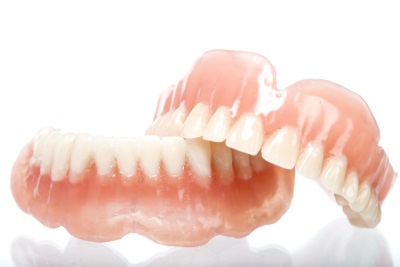

Teeth Whitening
Teeth whitening gives patients a fast, non-invasive way to enhance their smile. Popular with both men and women at any age, teeth bleaching or whitening treatments are provided to reverse years of staining and discoloration. A noticeably whiter and brighter smile in a short time is the major benefit of in-office dental whitening. A relatively high-concentration peroxide gel is precisely applied by the dentist to the teeth after the gums are protected. Typically, the peroxide remains on the teeth for a few 15 to 20 minute periods that will continue for an hour (at most). Patients with particularly stubborn staining may be asked to come back for additional treatment, or may be recommended to continue the process with take-home whitening. Take-home kits give patients a user friendly lower-concentration peroxide gel that stays on the teeth for anywhere from an hour to overnight. The lower the peroxide amount, the longer it can sit on the teeth. The gel is put on the teeth with a customized tray that looks like a retainer or mouth guard. You can learn more about teeth whitening procedures here.
Children’s Dentistry
Our dental practice offers dental treatment for both adults and children. Creative Smiles teaches kids the proper oral hygiene methods to follow such as flossing, brushing and checking for oral health issues. Maintaining a healthy mouth is an contributing part of living a healthy lifestyle, so kids should go to regular dental appointments from an early age. Even kids as young as a year old can receive a dental exam, though it is commonly believed that the best time for to bring a child for their first dental visit is between six months and one year after the first tooth has erupted. Teaching the proper dental techniques to kids is necessary for various reasons. Some of these include aesthetic reasons, while most others are required for good oral health. Children who see a dentist regularly starting from an early age have a higher chance of developing healthy primary “baby” teeth. These teeth need to be cared for properly until they naturally fall out. Learn more about kids’ dentistry at our office.


Emergencies
Nobody plans for accidents, but knowing what to do when a dental emergency happens can stop more severe problems from happening, and even save a tooth. When dental emergencies happens, you should visit the dentist as soon as possible. At Creative Smiles, we are experts in treating emergencies and set time aside for our emergency patients. Make sure you call us and provide as much detail as possible about your situation. If the emergency occurs when our dental office is closed, go to the nearest emergency room. We specialize in treating oral injuries such as bleeding or knocked out teeth, lost dental crowns and fillings, chipped or cracked teeth, facial swelling, toothache, and more. View more information about dental emergencies at Creative Smiles.
Root Canal
A root canal is a procedure that restores and saves a tooth that is infected or has severe damage. The process involves removing the infected or decayed pulp of the tooth, cleaning and sanitizing the area and then filling and sealing it. Some things that cause pulp infections are a cracked tooth, a severe cavity, repeated dental treatments on a tooth or trauma. It’s called a “root canal” because the dentist cleans out the canals within the tooth’s root. Usually, this procedure is needed when a tooth suffers from a serious infection. The pulp inside of the tooth can develop an infection because of bacteria getting inside from an injury or a severe, untreated cavity. If a cavity is left untreated, the infection can worsen and the tooth may require extraction. View more information on root canal treatment at Creative Smiles.


Sedation Dentistry
With sedation dentistry, the dentist administers a drug that helps you relax before or during your dental procedure. General anesthesia, renders the patient completely unconscious. The other types will help you relax, but won’t make you fall completely asleep. Nitrous oxide gas will relax you during the procedure. Since it wears off relatively quickly, your dentist may let you drive yourself home after. Oral sedatives: Oral sedatives, such as diazepam, also assists patients with relaxation during their procedure. They should usually be taken an hour or so prior to going to the dentist. You will be fully conscious but calm and relaxed, and you may experience some fatigue until it wears off. Intravenous sedatives, also known as IV sedatives can cause varying stages of consciousness. This is also known as general anesthesia and, as stated before, ensures the patient is fully asleep until it wears off. Read more about the benefits of sedation dentistry before your procedure.
Tooth Extractions
Although permanent teeth are meant to permanently remain in a person’s mouth for their lifetime, there are several reasons why teeth may need to be extracted. A tooth is often too severely damaged from trauma or decay and can’t be repaired. Some other reasons include tooth crowding. Sometimes teeth are removed to prepare your mouth for braces. The objective of getting braces is to align the teeth, which may cause problems if you have too many teeth or if they are too large. Also, if a tooth is not able to come in through the gums because there is not adequate space for it, your dentist may recommend that it be extracted. Before the tooth is pulled, your dentist will administer a local anesthetic to numb the affected area. If you are having more than one tooth pulled or if a tooth is impacted, your dentist may use a strong general anesthetic. This will stop you from experiencing pain and make you sleep through the procedure. Check out more about tooth extractions performed at our office.
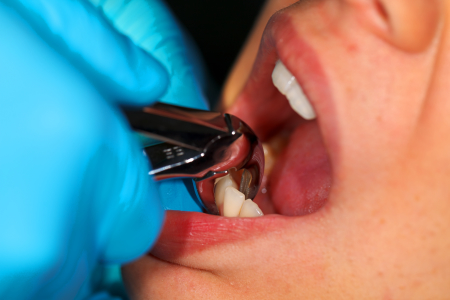
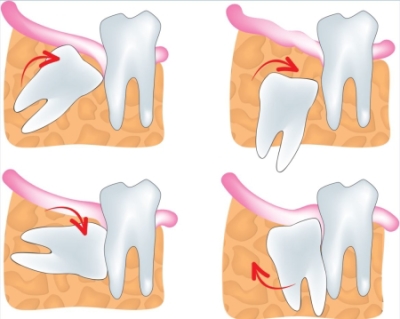
Wisdom Tooth Extractions
Wisdom tooth extraction is a an oral surgery that extracts one or more wisdom teeth. These are the four permanent adult teeth located in the back of the mouth in the upper and lower jaw that typically emerge between 17 and 25. If there isn’t adequate space for a wisdom tooth to come in, this is referred to as an impacted wisdom tooth. This can lead to pain, infections or other oral health problems, so the tooth or teeth will require extraction. Wisdom tooth extractions can be done by either a dentist or an oral surgeon. To prevent issues from occurring in the future, many dentists recommend removing the wisdom teeth even if they aren’t hurting you at the time. The surgery is usually done at a dentist or oral surgeon’s office, with local or general anesthesia. You will talk about these options before your procedure begins. If your wisdom teeth have erupted through the gums already, they can be pulled relatively easily. Impacted wisdom teeth can be a bit more complicated to remove since this process frequently involves splitting the tooth into smaller pieces. Read more about wisdom teeth extraction for a better sense of the procedure.
Bruxism/Teeth Grinding
Gnashing, grinding, or clenching the teeth consistently is a condition known as Bruxism or teeth grinding. Bruxism may cause a person to unconsciously clench or grind their teeth when you’re sleeping or awake. People who grind their teeth during sleep are more likely to experience other sleep conditions such as sleep apnea. Some symptoms of bruxism include teeth grinding and clenching, flat teeth, cracked, chipped or loose teeth, damaged or worn enamel, tooth pain or sensitivity, as well as other symptoms. In more extreme cases, treatment options include types of dental therapies and medications to prevent further damage and eliminate pain or discomfort in the jaw. Splints and mouth guards can keep teeth separated to stop damage due to clenching and grinding. In cases where bruxism has led to sensitivity or chewing problems, your dentist may need to restore your teeth’s surface or repair them with crowns. Read on about teeth grinding treatments here.
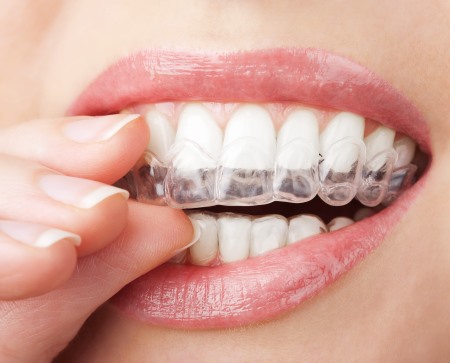
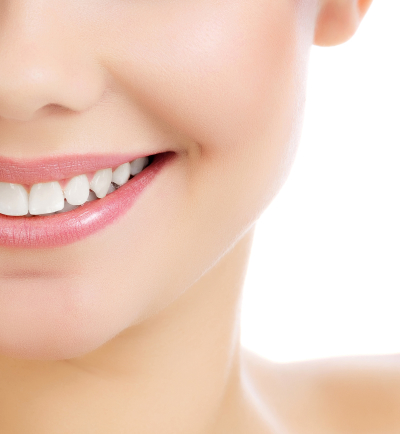
Gum Reconstruction and Gum Disease
Your gums provide protection and support to your teeth. Gum recession can be a serious issue if left untreated. Gum recession can cause the jawbone to deteriorate, which can lead to tooth loss. Fortunately, gum recession can be treated with a gum graft. The Connective Tissue Graft is used to repair tooth root exposure. In this procedure, a flap is cut from the palate and the connective tissue under the flap is removed. This tissue is then secured to the gum surrounding the exposed root. Other grafts are used to enhance thin gums. It uses tissue taken directly from the palate to place on the target area, instead of making a flap and taking tissue from that flap. Other grafts are used on patients who have enough gum tissue by the tooth. The tissue is taken from the gum around the tooth instead of the palate. When the flap is cut, one edge of the gum stays attached. The flap is pulled over the treatment area then stitched.
View more about gum disease and how it’s treated at Creative Smiles.
Dental Bonding
We offer dental bonding to repair or improve the look of a patient’s smile. In this process, a tooth colored resin material is applied to the tooth and then hardened to bond the material. Dental bonding is a an affordable way to fix improve the look of a person’s smile. The tooth-colored resin seals over any cracks, chips and even decay. It can also be helpful in closing gaps between teeth and can also make them look longer. Dental bonding is a more cost efficient alternative to veneers and crowns. First, you and the dentist will choose a resin color that matches your teeth. Then, they will prepare your tooth or teeth by applying a conditioning liquid on your tooth’s surface. The resin is then applied to the tooth and molded to an ideal shape. They will then use an ultraviolet light to harden the resin. Once it is hardened, it will be shaped and polished for a natural and beautiful look. Anesthesia is not needed for this treatment and it takes about 30 minutes to an hour for one tooth. Learn more about dental bonding to fix teeth at our office.

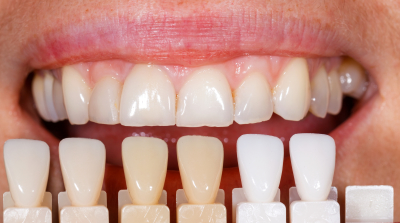
Tooth Color Restoration
Tooth color restoration, also called white fillings, a tooth colored composite resin works as a great alternative to metal fillings. Instead of getting silver, amalgam, or gold fillings, you’ll receive a filling that that looks like your tooth. This treatment can also be useful for patients with receding gums. The dentist will shape the material for a natural looking appearance. Once the resin is applied, it is hardened with a light. This plastic material is used to fill cavities and restore damaged or chipped chunks out of a tooth. This tooth-colored material does not have any metal and they harm the present tooth structure. It fits the shape in order to repair any kind of damage. This material provides a beautiful looking alternative to a crown and still leaves the natural tooth or teeth in place. This restoration also can help the tooth function and appear like the original tooth. Dental bonding and veneers can also incorporate tooth color restoration, learn more here.
Cosmetic Smile Assessment
We believe that our patients deserve healthy and beautiful smiles. Now thanks to the new advances in cosmetic dentistry today, you can get a perfect smile easier than ever before. Everyone can get the smile of their dreams thanks to the advancements that have been made in modern cosmetic dental care, and we believe that you should feel confident when smiling. A conversation at the beginning of your first free consultation regarding your questions and concerns will be followed up with a thorough examination of your mouth, from one of our dental experts. After the completion of the examination, you and your dentist will go over the options that are available in order to provide you the best smile possible. Some examples of smile enhancement services are dental bonding, dental crowns, teeth whitening, veneers, and dental implants to replace missing teeth with All-on-4, same day teeth implants, or mini implants, learn more about cosmetic smile assessment at our office.


Laser Dentistry
Laser dentistry uses lasers to help with dental procedures. They are used to eliminate and reposition oral tissues during dental procedures using the powerful light. Laser therapy can be useful in a variety of procedures, which range from dental implants to wisdom tooth extractions, treating infection or inflammation, and even bone and gum tissue reshaping. They offer a variety of advantages as well. Lasers can replace a drill in some procedures, and anesthesia may not be needed. Patients may also have a quicker healing time, experience less bleeding and lowered infection risk. Your dentist may recommend laser dentistry in many cases. They reduce the level of oral bacteria, so they are great for treating infected teeth and gums. Lasers can also help to harden fillings quicker and remove decay. Oral biopsies can also be performed with the help of lasers. Learn more about dental treatment with laser dentistry.
Metal Free Dentistry
Metal free dentistry can help with shifting and/or improve the appearance of teeth without the metallic look of braces. Metal free dentistry provides many choices for patients who don’t like the look or metal braces but still want to get a perfect smile. Metal free dentistry provides an choices for those who don’t want the obvious metallic appearance of braces in their mouth. Some kinds of metal free dentistry we provide are porcelain veneers, dental crowns, clear ceramic braces, and Invisalign. This form of dentistry provides a breadth of options for aligning and improving teeth instead of the standard bracing treatment. Many patients are choosing metal free options as their preferred choice for restoring teeth alignment, learn more about metal free dentistry at our office.
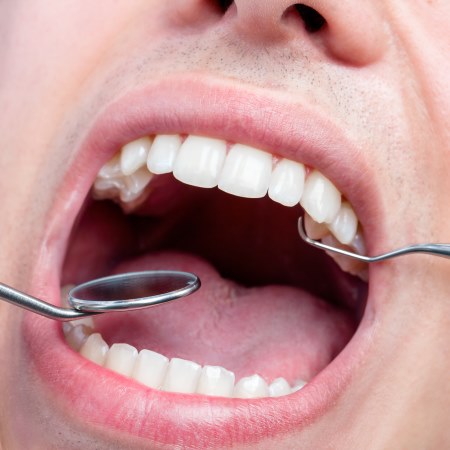

New Patient Visit
During your first visit to our office, your comfort and satisfaction are important from the start. This is why you will receive an explanation of what to expect at your first dental dental appointment. We’re always happy to answer any questions about your situation at your first dentist visit. You will also go over your medical history with your dentist. If you have any dental health concerns, you can feel feel free to share them with the dentist. Your input matters to the overall success of your treatment so we encourage you to ask questions. During the visit, your dentist will also examine your teeth, gums, and mouth, and they may take x-rays and/or panoramic radiographs. These will help your dentist check on unerupted or impacted teeth, sinus conditions, and finding cracks or fractures in the jawbone. Learn more about new patient visits before your first appointment at Creative Smiles.
Published on May 31, 2018, Updated on February 10, 2022
